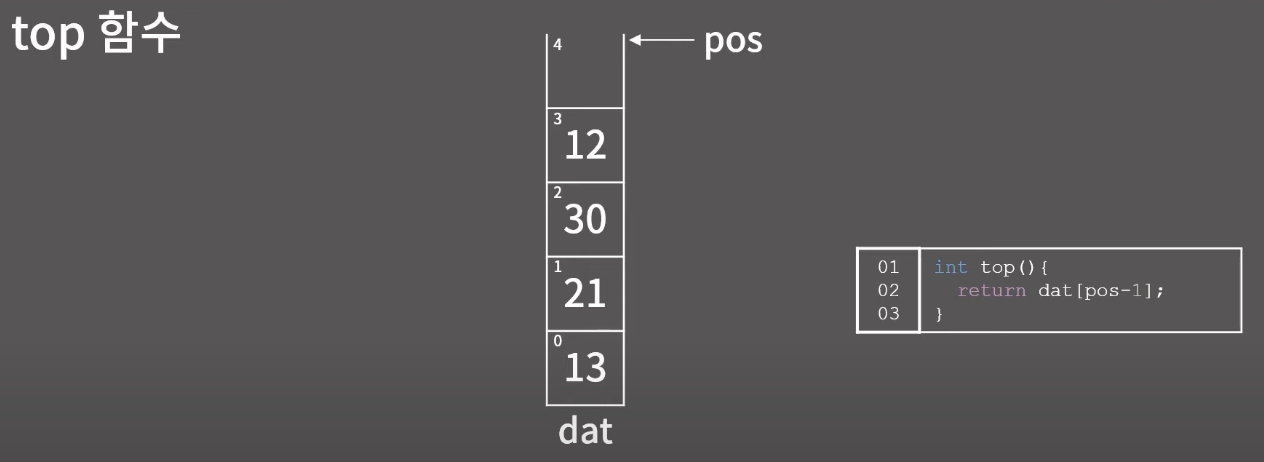728x90
스택
- 한쪽 끝에만 원소를 넣거나 뺄 수 있는 자료구조
- Restricted Structure: 스택, 큐, 덱
- ex. 프링글스 통, 엘리베이터
- FILO(First In Last Out) 자료구조
- 먼저 들어간 원소가 나중에 나오는 구조
성질
- 원소의 추가 / 제거 O(1)
- 제일 상단의 원소 확인 O(1)
- 제일 상단이 아닌 나머지 원소들의 확인 / 변경이 원칙적으로 불가능
- 구현 시 배열 기반으로 구현
구현
- 배열(더 쉬움)
- 연결리스트
const int MX = 1000005;
int dat[MX];
int pos = 0;원소를 담은 큰 배열 1 개, 인덱스 저장할 변수 1개
{13, 21, 30}이 담겨있는 스택 나타내기
-> dat[0], dat[1], dat[2]에 각각 13, 21, 30, pos = 3
=> 스택의 값들은 dat의 0번지부터 저장,
pos는 다음에 원소가 추가될 때 삽입해야 하는 곳 가리킴 -> pos의 값 = 스택의 길이(스택 내의 원소의 수)



#include <bits/stdc++.h>
using namespace std;
const int MX = 1000005;
int dat[MX];
int pos = 0;
void push(int x) {
// pos가 가리키는 자리에 12 추가, pos 1증가
dat[pos++] = x;
}
void pop() {
// pos 1 줄이기
pos--;
}
void top() {
return dat[pos-1];
}
void test() {
}
int main(void) {
test();
}STL stack
#include <bits/stdc++.h>
using namespace std;
int main(void) {
stack<int> S;
S.push(10); // 10
S.push(20); // 10 20
S.push(30); // 10 20 30
count << S.size() << '\n'; // 3
if(S.empty()) cout << "S is empty\n";
else cout << "S is not empty\n"; // S is not empty
S.pop(); // 10 20
cout << S.top() << '\n'; // 20
S.pop(); // 10
cout << S.top() << '\n'; // 10
S.pop(); // empty
if(S.empty()) cout << "S is empty\n"; // S is empty
cout << s.top() << '\n'; // runtime error 발생
}
728x90
반응형
'📓 > 자료구조 | 알고리즘' 카테고리의 다른 글
| [바킹독의 실전 알고리즘] 0x08강 - 스택의 활용(수식의 괄호 쌍) (0) | 2024.03.04 |
|---|---|
| [바킹독의 실전 알고리즘] 0x07강 - 덱 (0) | 2024.03.04 |
| [바킹독의 실전 알고리즘] 0x06강 - 큐 (0) | 2024.03.04 |
| [바킹독의 실전 알고리즘] 0x04강 - 연결리스트 (0) | 2024.03.04 |
| [바킹독의 실전 알고리즘] 0x03강 - 배열 (0) | 2024.03.04 |
